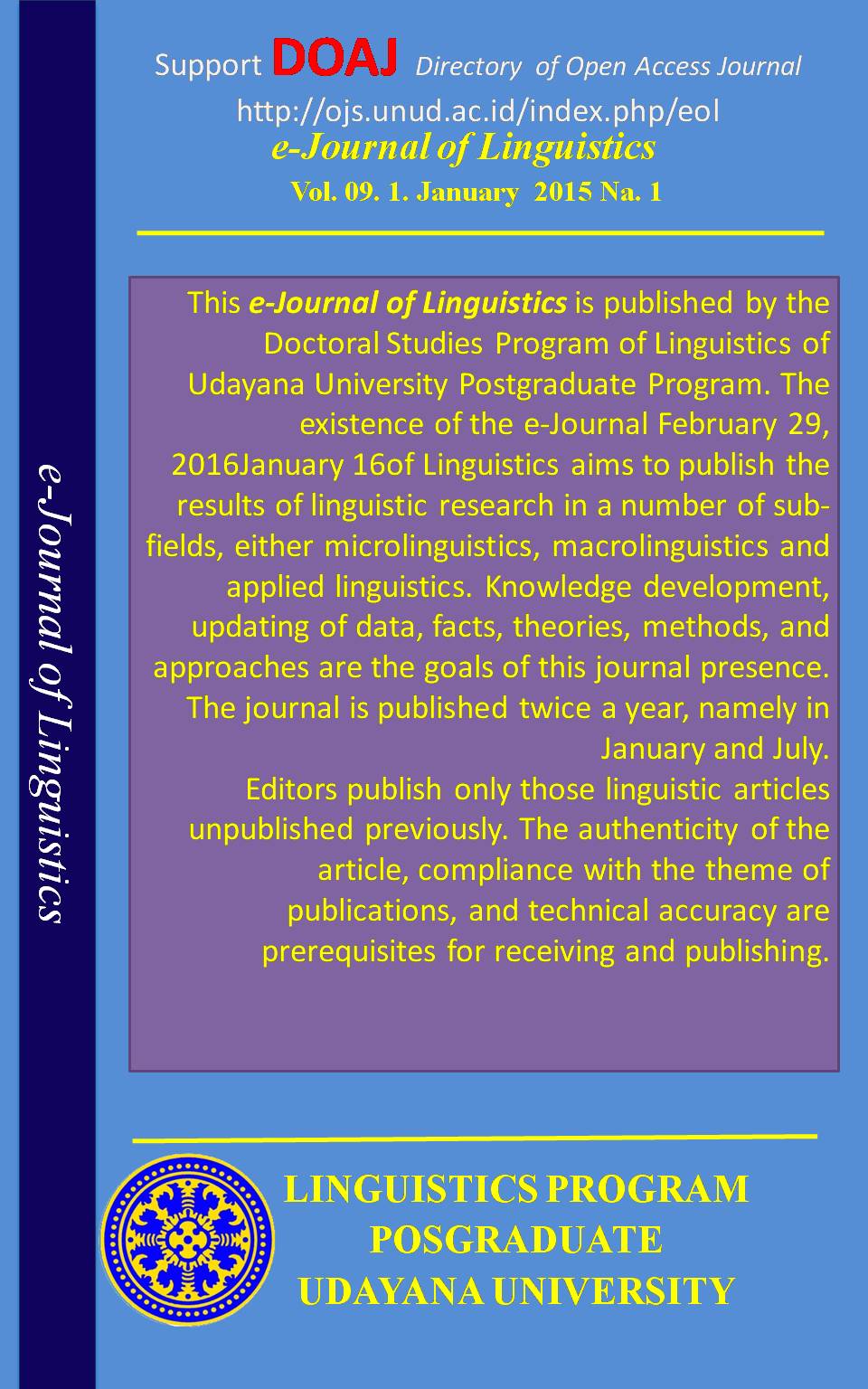ECOLINGUISTIC PERSPECTIVE OF KERAPINGAN CULTURE
Abstract
This article is designed to explore the problem of the rapingn crops encoded in the form of words, phrases, sentences and even discourse. This scientific study raised several issues, such as How do people manage raping plant as one of the supporting community cultural activity? How kerapingan forms of expression are seen as ideas, thoughts, and ideology of the environment in which they live? What are the meanings contained in the expression of kerapingan? What are the functions of kerapaingan expressions relating to the relationship between people and raping plants?
This paper aims to describe the raping crop management, kerapingan form of expression, the meaning contained in kerapingan expression, and function of kerapingan expressions. To explain the problems of the study, eco-linguistic framework is used. The principle of eco-linguistic theory is a way of managing raping crop diversity to create a mutually dependent relationship between the public and raping plants, insects, and other plants. The framework of interaction and interdependence create also mutual respect, and respect between human beings and the natural surroundings, raping plants, bamboo plants, insects, such as wasps, and animals such as ferrets. To obtain such data, interviews and observation methods were applied
Downloads
Keywords

This work is licensed under a Creative Commons Attribution 4.0 International License











